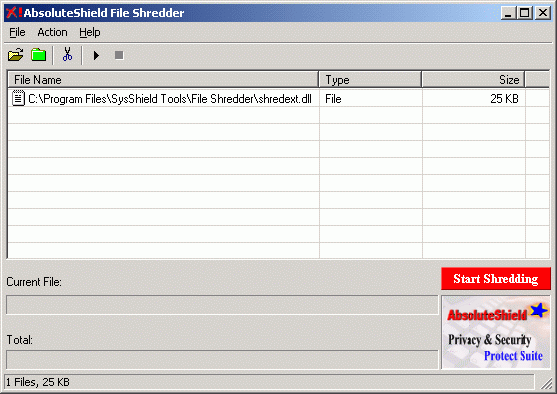

- #File shredder norton how to#
- #File shredder norton install#
- #File shredder norton software#
- #File shredder norton Pc#
Click “Add Files” or “Add Folders” to add a file/files that you want to permanently delete. Download, install, and launch AOMEI Partition Assistant, click “Tools” > “Shred Files”.
#File shredder norton how to#
Note: If you want to have a portable shredding software, please turn to this page firstly to see how to create a bootable media: How to Boot Computer from Bootable Media? How to completely and securely delete files in Windows 10, 8, 7? AOMEI Partition Assistant allows you to create portable file shredder (bootable).
#File shredder norton Pc#
Portable file shredder: Sometimes, you may want to delete files on different PC or encounter booting issue. Flexible usage: Besides shredding files or folders, it provides “ Wipe Partition” and “Wipe Disk” options for those who want to wipe more data or the whole disk. With its instructions, you can finish the process in a few steps. #File shredder norton software#
Intuitive interface: It is a user-friendly software make the operation is easy. Excellent compatibility: It works well in Windows operating systems, including Windows 10, 8, 7, and Windows XP, Windows Vista. And its Professional Edition gives you 3 more options that have higher shredding ability. High shredding ability: It employs zero-filling wiping method that overwrites your files or folder with zeros. After PGP Shred Free Space completes, click Next. The Perform Shred dialog box is displayed, containing statistical information about the drive or volume you selected. This option is not available on all systems, and typically is not necessary. Choose whether to shred internal NTFS data structures, then click Next. While three passes with PGP Shred are sufficient to securely delete the data, you can specify up to 49 passes. In the Shred drive field, select the disk or volume you want to shred and the number of passes you want PGP Shred Free Space to perform. The Introduction screen of the PGP Shred Free Space Assistant is displayed. Select PGP Disk > PGP Shred Free Space. Go to Start > All Programs > PGP > PGP Desktop. To use the PGP Shred Free Space Assistant. 
This allows you to destroy sensitive files or folders completely. PGP Shred Free Space allows you to erase free disk space that could contain data from files and programs previously deleted by normal processes and were not shredded.

Shred all free space on your computer's hard drive A confirmation dialog box is displayed, asking you to confirm that you want to shred (secure delete) the listed files and/or folders.
Select the files on your system you want to shred, then click Open. In the PGP Desktop main application window, select Tools > Shred Files. To shred files from the PGP Desktop application In Windows Explorer, right-click files/folders you want to shred and select PGP Desktop > Shred. To shred files by right-clicking in Windows Explorer The files are securely deleted from your system. A confirmation dialog box is displayed, asking you to confirm that you want to shred (secure delete) the listed files and/or folders. Drag and drop the files/folders you want to shred onto the PGP Shredder icon on your Desktop. To shred files using the PGP Shredder icon on your Desktop Windows system files or files that are read-only. NOTE: If you copy a file from Vault to your computer's hard drive to work on and edit, after you copy it back to Vault and verify it was copied completely and correctly, you should shred the copy on your computer. Files saved on networked file servers such as NTM or Vault. PGP Shredder can not delete the following items: File recovery programs cannot recover data that is deleted by PGP Shredder. When using PGP Shredder, make sure the files you are deleting will no longer be needed. For information on encrypting your entire computer so you don't need to use PGP Shredder, click here.įiles and folders deleted by PGP Shredder CANNOT BE RECOVERED. #File shredder norton install#
To install Symantec Encryption Desktop (PGP Desktop) on College-owned Windows PCs, click here.







 0 kommentar(er)
0 kommentar(er)
